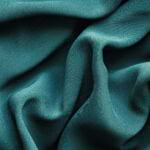
Textile Additives
Introduction
SEQENS develops custom solutions and ingredients for the most demanding industries such as aeronautic, construction, cosmetics, electronics, automotive and textile.
Cross-Linking agents
In this purpose, SEQENS offers cross-linking agents, TEXTENS GM 192 and TEXTENS TA 135, enabling the reduction of textile fibers’ fibrillation.
In the wet state, the water penetrates inside the fibrillar bundles, resulting fiber swelling and breakage of hydrogen bonds. This leads to fibril splitting and subsequent exposure of the fibrils onto the fiber surface giving the finished fabric a frosty appearance.
Reducing fibrillation of textile fibers allow high wet abrasion resistance and a modified pore structure of the fiber for better dye fixation.
TEXTENS properties
- Can cross-link with fibers under alkaline conditions before or after the fabric has been dyed
- Maintain the good physical properties of the fiber together with a good dye affinity
- The fabric produced can be processed on most dyeing machines
- Give to the fabric produced a good performance in subsequent washing
- The cross-linked fiber has an enhanced dye uptake that gives more economical dyestuff costs and deep coloration
- Less unfixed color remains to be removed, both reducing the water consumption in washing off and the color loading in the dyehouse effluent
- TEXTENS can also be used for other applications such as strength paper agent and as an ingredient in the formulation of solder resist inks

Ask for our brochure: TEXTENS
Textens TA 135
Hexahydro-1,3,5-tris(1-oxoallyl)-1,3,5-triazine as TEXTENS TA 135 is specifically dedicated to LYOCELL fiber. It can also be used for other applications such as paper strengthening agent and component in the formulation of solder resist inks.
Textens GM 192
2-sodiumhydroxy-4,6-dichloro-1,3,5- triazine as TEXTENS GM 192 is generally used for cellulosic fiber as well as for gelatin hardening in the photographic industry.
